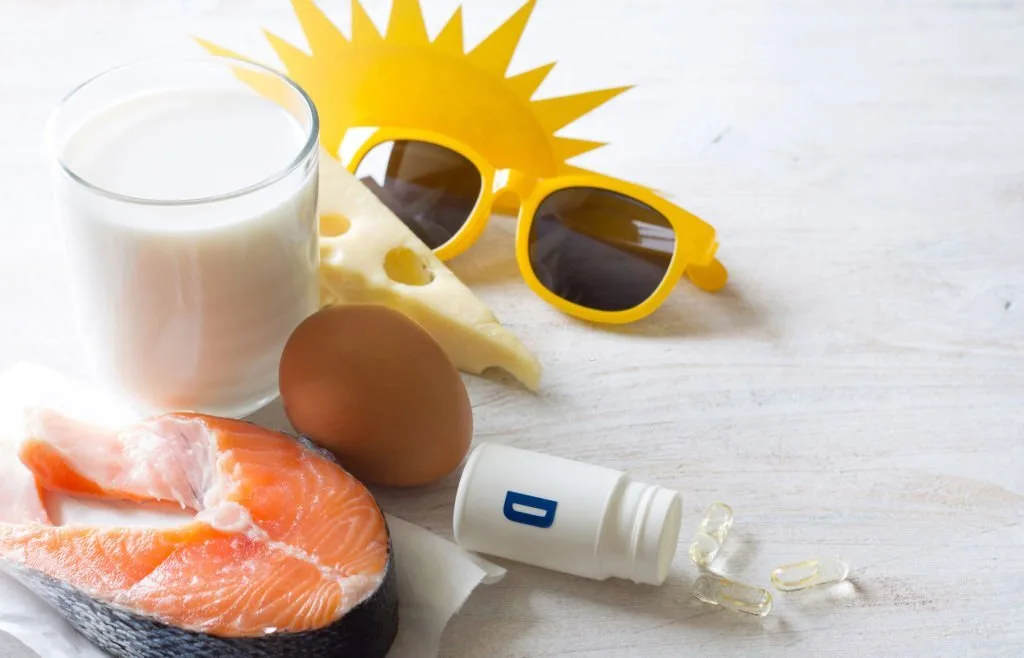Spinach, the emerald green leaves that adorned Popeye’s plate, is more than just a cartoon hero’s favorite snack! A symbol of strength in pop culture, it carries a real-world punch that packs a nutritional wallop.
Spinach is a superfood. It seems to do everything from supporting eye health to bolstering the immune system.
Yet, amidst its virtues, there’s a common question: does spinach have vitamin D?
Well, spinach doesn’t have vitamin D as it lacks the specific compounds (7-Dehydrocholesterol, Ergosterol, enzymes, etc.) needed to produce or contain Vitamin D. But the leafy vegetable is a great source of essential nutrients like Vitamins A, C, and K, as well as iron, potassium, and magnesium.
Join us to explore the nutritional goldmine of spinach, why it doesn’t have vitamin D, and what makes spinach a standout in the world of healthy eating.
Vitamin D: The Sun-Kissed Nutrition
Maintaining numerous physiological functions within the body is indeed essential, and vitamin D, often called the “sunshine vitamin,” plays a crucial role in achieving it. When exposed to sunlight, your skin makes vitamin D, or you can get it from some foods and supplements.
Vitamin D helps your body absorb calcium and phosphorus, essential minerals for bone health. Besides, it also helps in regulating immunity, digestion, and mood.
Do you know a lack of vitamin D can cause severe health issues? You may face bone problems: rickets in children and osteomalacia in adults. It can also increase the risk of infections, depression, and chronic diseases.
It’s truly amazing how much one little vitamin can do!
Does Spinach Have Vitamin D?
According to research, spinach does not have vitamin D. The specific compounds needed for Vitamin D synthesis are absent in spinach and other higher plants. But animals can convert these compounds to vitamin D in their skin when exposed to UVB rays.
Let’s look at the essential compounds that spinach lacks and, thus, doesn’t have vitamin D.
Absence of 7-Dehydrocholesterol
This compound is found in the skin of animals and serves as the precursor to Vitamin D3 (cholecalciferol). When UVB rays from the sun strike the skin, they convert 7-dehydrocholesterol into cholecalciferol.
Plants, including spinach, lack 7-dehydrocholesterol, so they cannot initiate this conversion process.
Absence of Enzymes Involved in Conversion
Animals possess specific enzymes that further convert cholecalciferol into its active form. The liver transforms Vitamin D3 into 25-hydroxyvitamin D (calcidiol). And then, the kidneys convert calcidiol into 1,25-dihydroxy vitamin D (calcitriol).
These enzymes are not found in plants. So, plants like spinach are incapable of these conversion steps.
Absence of Ergosterol
Certain fungi, such as mushrooms, can transform ergosterol into Vitamin D2 (ergocalciferol) when exposed to UV light. But this compound is not present in higher plants.
Spinach lacks this specific compound as a plant source and doesn’t contain vitamin D.
Though spinach does not have vitamin D, it is undoubtedly a strong contender for a nutritional trunk, boasting an array of vitamins and minerals.

Spinach: A Nutritional Overview
Spinach, a leafy green vegetable rich in various nutrients, has long been celebrated for its health benefits. It’s packed with vitamins, minerals, and antioxidants, making it a favorite choice among health enthusiasts.
Nutrient Composition
Spinach is a powerhouse of nutrients. It is rich in vitamins such as A, K, C, and several B vitamins. Moreover, it contains minerals like iron, calcium, potassium, and magnesium that benefit you immensely.
- Vitamin A: Good for eye health and immune function.
- Vitamin C: Supports skin health and the immune system.
- Iron: Essential for oxygen transport in the blood.
- Magnesium: Important for muscle and nerve function.
Here’s a table to provide an at-a-glance view of spinach’s (100g raw) nutritional value.
| Nutrient | Amount (per 100g) |
| Calories | 23 |
| Protein | 2.86g |
| Fiber | 2.2g |
| Sugars | 0.42g |
| Iron | 2.71 mg |
| Magnesium | 79 mg |
| Calcium | 99mg |
| Vitamin A | 9380 IU |
| Vitamin C | 28.1 mg |
| Vitamin K | 483µg |
| Vitamin E | 2.03mg |
| Vitamin D | 0 IU |
Benefits Of Spinach
- Antioxidant Powerhouse – Spinach contains various antioxidants like lutein and zeaxanthin that may help reduce the risk of retina damage, chronic diseases, etc.
- Supports Heart Health – The folate and potassium in spinach may contribute to reducing hypertension and supporting overall heart health.
- Reduces oxidative stress – Vitamins C and E in it help reduce oxidative stress by scavenging free radicals and preventing cellular damage.
- Aids in Digestion – The fiber content in spinach helps digestion by promoting a healthy gut and preventing constipation.
- Bone Health – Vitamin K in spinach contributes to bone health by aiding calcium absorption.
- Weight Management – Spinach can be a great addition to weight management diets as it’s low in calories but high in nutrients.
Alternatives for Obtaining Vitamin D: Spinach vs. Other Sources
Here’s a table that compares spinach to other sources of Vitamin D. You can choose the one source that can be your best way to get as much vitamin D as possible.
| Source | Vitamin D Content (per 100g) | Type of Vitamin D | Notes |
| Spinach | 0 IU | N/A | Spinach does not contain Vitamin D due to a lack of specific compounds like 7-dehydrocholesterol. |
| Salmon (wild) | 988 IU | D3 | Rich animal source of Vitamin D3. |
| Maitake Mushrooms | 1120 IU (when UV-exposed) | D2 | Fungi can synthesize Vitamin D2 when exposed to UV light. |
| Fortified Milk | 120 IU (variable) | D3 | Often fortified with Vitamin D3 to enhance nutritional value. |
| Eggs (yolk) | 42 IU | D3 | Contain small amounts of Vitamin D3. |
| Sunlight | N/A | D3 | Synthesized in human skin upon UVB exposure. |
Sunlight: The Natural Source
Vitamin D synthesis occurs in the skin upon exposure to UVB radiation from the sun. Depending on factors like geographical location, skin type, and season, 10 to 30 minutes of midday sun exposure on the face and arms can provide sufficient vitamin D.
Do you know this much sun exposure equals consuming 10,000–20,000 IU of vitamin D?
So, why wait; bask in the sun!

Vitamin D Supplementation: A Viable Option
Supplements are an effective alternative for those unable to obtain enough vitamin D through sunlight or diet. They come in two forms, D2 (ergocalciferol) and D3 (cholecalciferol), with D3 often being more effective in raising blood levels of vitamin D.
The recommended dosage for vitamin D supplements depends on your age, health status, and sun exposure. The NHS recommends taking 10 micrograms (400 IU) of vitamin D daily, with a maximum of 100 micrograms (4,000 IU) per day.
| Age group | The recommended daily amount of vitamin D |
| Babies up to 12 months | 8.5 to 10 micrograms (340 to 400 IU) |
| Children from 1 to 10 years | 10 micrograms (400 IU) |
| Children from 11 to 17 years | 10 micrograms (400 IU) |
| Adults up to 70 years | 10 micrograms (400 IU) |
| Adults over 70 years | 20 micrograms (800 IU) |
But remember, these guidelines are not universal and may not apply to everyone. So, always consult your doctor, check your vitamin D levels regularly before taking supplements for optimal health, and avoid taking too much vitamin D as it may harm you.
Check how you can get rid of excess vitamin D.
Bottom Line
Spinach doesn’t contain Vitamin D, but its nutritional value is undeniable. Packed with essential nutrients from Vitamin A to Iron, it’s a powerhouse of health benefits.
While it may not boost your Vitamin D levels, incorporating spinach into your diet adds a wholesome touch to your meals.
To check out more on fitness, visit our blogs.

I am a health and wellness enthusiast working in a Pittsburgh-based wellness clinic. My primary role as a consultant is to tailor a balanced lifestyle for my patients, where positive steps and potent supplements play a synergistic role.


